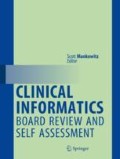Abstract
There are many aspects to effective leaders. Several have been identified by Lowder
-
1.
Personal effectiveness dimension. Successful leaders certain personal characteristics that trustworthiness, a strong moral compass, intellectual fortitude and optimism. They tend to be self-motivated, goal-oriented and work towards self-improvement. They manage time effectively and set priorities for important issues.
-
2.
Interpersonal relationship effectiveness dimension. To make peace among other workers, leaders must embody trust, compassion, empathy, fairness and objectivity. They encourage, guide and motivate. People with these attributes are often perceived as charismatic and influential. In any charismatic leader, there is always a potential to pursue self-interest at the cost of the organization.
-
3.
Managerial effectiveness dimension. The leader exudes team spirit, improves the productivity of other people, delegates authority, empowers others, communicates with candor, seeks organizational improvement, and emulates high organizational values.
-
4.
Operational effectiveness dimension. The leader is an expert in relationship building, understands customer needs, propagates the organizational vision and mission, promotes organizational stability, and maintains customer satisfaction. Using these tools, he improves numerical measures like net profit, return on investment, earnings per share, etc.
-
5.
Societal effectiveness dimension. The leader (or the organization) positively impacts the environment, communities, governments, suppliers, or consumers through community involvement, public relations and environmental stewardship.
Notes
- 1.
Lowder, B. Tim, Five Dimensions of Effective Leadership: A Meta-Analysis of Leadership Attributes & Behaviors (March 21, 2007). Available at SSRN: https://ssrn.com/abstract=975559 or http://dx.doi.org/10.2139/ssrn.975559.
- 2.
Barsh J, Mogelof J, Webb C. The value of centered leadership: McKinsey Global Survey results [Internet]. McKinsey & Company. [cited 2017Mar28]. Available from: http://www.mckinsey.com/global-themes/leadership/the-value-of-centered-leadership-mckinsey-global-survey-results.
- 3.
This table and much more useful information comes from changingminds.org. See http://changingminds.org/disciplines/leadership/articles/manager_leader.htm.
- 4.
Since business school involves teaching people how to be leaders, this has not been the most popular of the leadership theories in academia.
- 5.
In European corporations, the board is broken down into a supervisory board and a management board.
- 6.
Pruitt DG. Strategic choice in negotiation. American Behavioral Scientist. 1983 Nov 1;27(2):167–94.
- 7.
DeChurch LA, Marks MA. Maximizing the benefits of task conflict: The role of conflict management. International Journal of Conflict Management. 2001 Jan 1;12(1):4–22.
- 8.
One of the reasons that this chapter is marked as Low Yield is that it would be really hard to write a board question about this material. No, really. Could you imagine a board question where the answer is “if you are in a fight, just try to be nice”?
- 9.
Rahim MA. A measure of styles of handling interpersonal conflict. Academy of Management journal. 1983 Jun 1;26(2):368-76.
- 10.
Thomas KW. Thomas-Kilmann conflict mode instrument. Tuxedo, NY: Xicom; 1974.
- 11.
Martín-Rodríguez LS, Beaulieu M-D, D’amour D, Ferrada-Videla M. The determinants of successful collaboration: A review of theoretical and empirical studies. J Interprof Care. 2005;19(sup1):132–47.
- 12.
Brousseau KR, Driver MJ, Hourihan G, Larsson R. The Seasoned Executive’s Decision-Making Style. Harvard Business Review. 2006 Feb;
- 13.
Grouping physicians’ personalities by specialty training is mostly a false stereotype. But it’s still fun. See Maron BA, et. al. Ability of prospective assessment of personality profiles to predict the practice specialty of medical students. Proc (Bayl Univ Med Cent). 2007 Jan; 20(1): 22–26. and Bexelius TS, et. al. Association between personality traits and future choice of specialisation among Swedish doctors: a cross-sectional study. Postgrad Med J. 2016 Aug;92(1090):441–6.
- 14.
Gleeson B. Four ways for Leaders to Make a Decision. Forbes 2012 Nov;
Author information
Authors and Affiliations
Corresponding author
Editor information
Editors and Affiliations
Rights and permissions
Copyright information
© 2018 Springer International Publishing AG
About this chapter
Cite this chapter
Mankowitz, S. (2018). 4.1 Leadership Models, Processes, and Practices. In: Mankowitz, S. (eds) Clinical Informatics Board Review and Self Assessment. Springer, Cham. https://doi.org/10.1007/978-3-319-63766-2_11
Download citation
DOI: https://doi.org/10.1007/978-3-319-63766-2_11
Published:
Publisher Name: Springer, Cham
Print ISBN: 978-3-319-63765-5
Online ISBN: 978-3-319-63766-2
eBook Packages: MedicineMedicine (R0)

